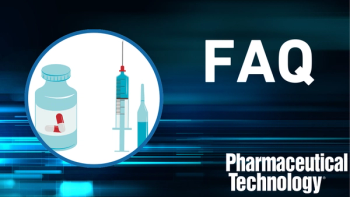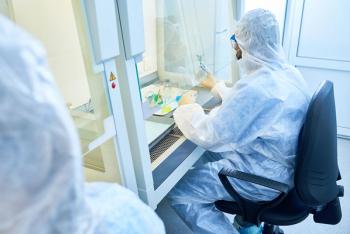
Collaborating on the Development of Radiopharmaceuticals
Key Takeaways
- Radiopharmaceuticals provide targeted cancer treatment, minimizing side effects and offering a theranostic approach for precise diagnosis and therapy.
- Challenges include global demand, isotope supply, regulatory requirements, and logistical issues, impacting development and delivery.
Pharmaceutical Technology® spoke with Juliana Maynard, PhD, Head of Translational Imaging at Medicines Discovery Catapult, to find out what makes radiopharmaceuticals unique and how MDC’s collaboration with Crown Bioscience can help developers of these treatments for cancer.
On Sept. 11, 2025, Medicines Discovery Catapult (MDC), a national life sciences service dedicated to drug discovery, and Crown Bioscience, a contract research organization, announced the companies were collaborating on an integrated translational biology platform for the development of radiopharmaceuticals (1). As part of the collaboration, MDC will provide knowledge in cell biology, high-resolution microscopy, radiochemistry, preclinical imaging, mass spectrometry, and multi-omic tissue analysis, and Crown Bioscience will provide discovery, preclinical, and translational platforms and services for oncology and immune-oncology products.
Pharmaceutical Technology® spoke with Juliana Maynard, PhD, Head of Translational Imaging, at Medicines Discovery Catapult, to find out what makes radiopharmaceuticals unique and how MDC’s collaboration with Crown Bioscience can help developers of these treatments for cancer.
What makes radiopharmaceuticals unique?
PharmTech: What is unique about the use of radiopharmaceuticals to treat cancer?
Maynard: Radiopharmaceuticals really do have enormous potential in modern medicine. They're already driving game-changing breakthroughs to patients, and we're seeing that worldwide. At their core, they are a class of medicines that contain both a radioactive form of a chemical element, something we call a radioisotope, and they can be used to both diagnose and also to treat cancers.
But what makes them so unique and so powerful is their precision; they will target radiation directly to the tumors. They work by taking a targeting molecule that binds to a specific receptor on a cancer cell and carries the radioisotope straight to the disease site. And once it's there, the gamma rays will emit either alpha or beta particles and kill the cancer cells for therapy. This means that we can both see the disease through the diagnostic tracer, and we can also treat it in a very targeted way, something we call a theranostic approach. It's highly individualized, and it's very much image-guided therapy. So instead of a one-size-fits-all [approach], what we can do is get a smarter, safer, and more patient-derived, stratified medicine approach to treatment.
Compared with traditional cancer therapies, radiopharmaceuticals spare healthy tissue. We don't get those side effects that we've seen with other cancer medicines, and because they're so precisely delivered to the cancer cells, the radiation dose to the rest of the body is significantly reduced, which lowers the risk of side effects. And we've shown proven treatment effects already in some really difficult-to-treat cancers. For example, prostate cancer and neuroendocrine tumors have shown huge traction.
Beyond the therapy, those radioactive traces and the technology advancements that we're seeing within the United Kingdom provide incredibly detailed insights to give both earlier and more accurate diagnostics. What makes them so unique is that we can combine the diagnosis and the treatment into one, and we're offering earlier detection [and] better, more precise treatment, [which] ultimately, should lead to better patient outcomes.
Challenges associated with radiopharmaceuticals
PharmTech: What are some of the specific challenges associated with the development of radiopharmaceuticals?
Maynard: There are some very real challenges, both in their development and delivery, that we need to overcome. Firstly, the global demand for radiopharmaceutical treatments is rising rapidly, at around 5% per year currently, and is expected to continue growing.
And here in the UK, every hospital is using them daily to help patients, but one of the biggest hurdles is access to the radioisotopes. Currently, there are no UK production routes for many of the key radionuclides that we need, which means that our clinical trials and the widespread use of these therapies are heavily dependent on imports from overseas and from reactors and cyclotrons. And naturally, that supply chain creates risks, and if those supply chains are disrupted, then the access to the treatment for the patient is immediately affected.
Secondly, there are regulatory and quality requirements. Like all medicines, radiopharmaceuticals must be manufactured, transported, and administered, and [have] very strict standards to ensure patient safety. Patient safety is at the forefront of every medicine that's produced, but because these products are radioactive and the bar for handling them, and also the compliance and how we administer them, is even higher, it can slow development and add significant complexity. And then there's also the challenge of the short half life. The radioisotopes themselves degrade very quickly. Often, the medicines have to be produced on the day that they're needed for injection, and also any delay in that transport, the production or the administration, can mean that procedures need to be canceled. This leads to a wasted product, or worse, a patient could be missing out on a timely diagnosis or treatment. While the promise of radiopharmaceuticals is huge, overcoming these challenges, particularly around reliable isotope supply regulations and logistics, is critical if we want to see the full impact for our patients, both here in the UK and also worldwide.
Assisting in the development of radiopharmaceuticals
PharmTech: How will the new Crown Bioscience/MDC platform accelerate the development of radiopharmaceuticals?
Maynard: The partnership between Crown Bioscience and Medicines Discovery Catapult is an incredibly exciting opportunity because it creates a fully integrated pre-clinical workflow for companies that are developing radiopharmaceuticals globally. Whether they're advancing new radiotherapeutics, exploring new isotopes or optimizing their targeting agents, this partnership can encompass all of those parts of the delivery.
Within Medicines Discovery Catapult, we've built a national radiopharmaceutical platform that combines the cutting-edge imaging technologies with the world-class radiochemistry and translational expertise within the team, and Crown Bioscience bring that unrivaled strength in pre-clinical oncology models and drug discovery services.
So together, that creates a seamless pathway through from discovery into pre-clinical validation, but also into those translational imaging studies. And what this means for drug developers is that they can carry out more efficient studies, they can generate that high-quality translational data, and it will support their precision medicine strategies. The partnership really does enable that rapid and reliable testing of how a radiopharmaceutical behaves within the body and also how the body responds to it, and how effective the radiopharmaceutical itself is, all of which are absolutely critical to identifying those drug candidates and reducing that clinical development risk.
We're also leveraging our expertise across other areas within MDC, such as our cell biology, high-resolution microscopy, and multi-omic tissue analysis, enabling us to deliver robust comparator studies with approved standards of care, which in turn provides greater regulatory confidence and helps those drug developers provide and prepare stronger and successful investigational new drug submissions. By combining all of our strengths across MDC and Crown, we're not only helping innovators develop radio pharmaceuticals more efficiently, but we're giving them the tools to de-risk their assets for investment, accelerate the time it will take to get them to clinic, and ultimately improve patient outcomes. So, it's all about moving radiopharmaceuticals to market faster and doing so in a way that's smarter, safer, and more impactful for our patients.
Reference
- Haigney, S. MDC and Crown Bioscience. Medicines Discovery Catapult and Crown Bioscience Form Strategic Global Alliance for Radiopharmaceutical Innovation. Press Release. Sept. 11, 2025.
https://www.businesswire.com/news/home/20250911458780/en/Medicines-Discovery-Catapult-and-Crown-Bioscience-Form-Strategic-Global-Alliance-for-Radiopharmaceutical-Innovation
Newsletter
Get the essential updates shaping the future of pharma manufacturing and compliance—subscribe today to Pharmaceutical Technology and never miss a breakthrough.





